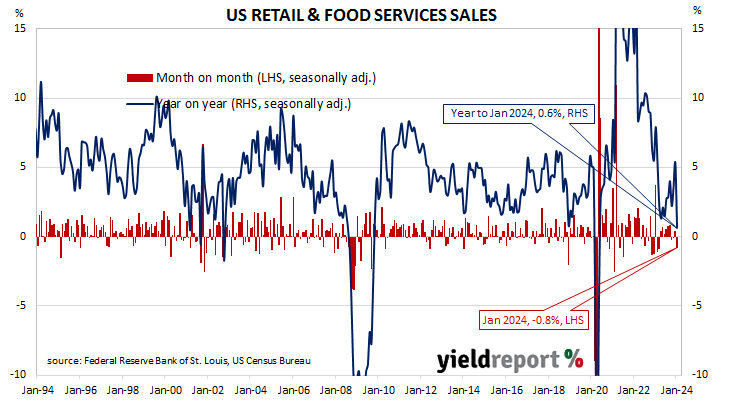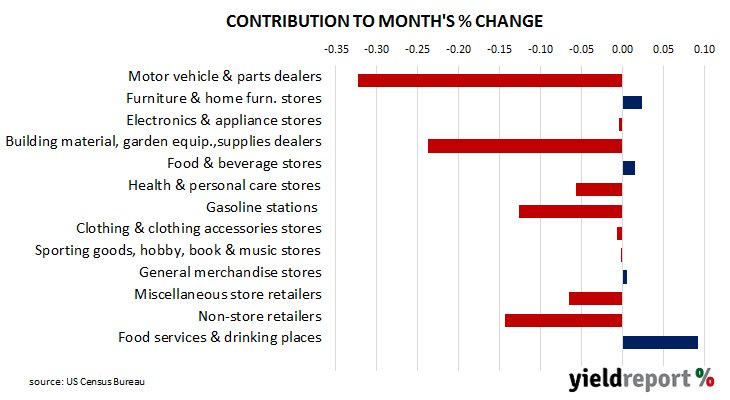Summary: US retail sales down 0.8% in January, fall worse than expected; annual growth rate slows to 0.6%; ANZ: will push down US Q1 GDP estimates, potentially bring Fed rate cuts forward; US Treasury yields fall modestly; rate-cut expectations largely unchanged; lower sales in nine of thirteen categories; “Motor vehicle & parts dealers” largest single influence on month’s result.
US retail sales had been trending up since late 2015 but, commencing in late 2018, a series of weak or negative monthly results led to a drop-off in the annual growth rate below 2.0%. Growth rates then increased in trend terms through 2019 and into early 2020 until pandemic restrictions sent them into negative territory. A “v-shaped” recovery then took place which was followed by some short-term spikes as federal stimulus payments hit US households in the first and second quarters of 2021.
According to the latest “advance” numbers released by the US Census Bureau, total retail sales fell by 0.8% in January. The result was worse than the 0.2% decline and in contrast with December’s 0.4% rise after it was revised from 0.6%. On an annual basis, the growth rate slowed from December’s revised rate of 5.3% to 0.6%.
“Control group retail sales were -0.4% versus expectation of +0.2%,” ANZ Head of FX Research Mahjabeen Zaman. “The muted sales will push down early estimates of Q1 GDP and potentially put earlier rate cuts by the Fed back on the table.”
The figures were released on the same day as the latest industrial production report and US Treasury yields fell modestly. By the close of business, the 2-year Treasury yield had slipped 1bp to 4.57%, the 10-year yield had lost 2bps to 4.24% while the 30-year yield finished 3bps lower at 4.41%.
In terms of US Fed policy, expectations of a lower federal funds rate in the next 12 months remained largely unchanged, with several cuts factored in. At the close of business, contracts implied the effective federal funds rate would average 5.315% in March, slightly below the current spot rate, 5.305% in April and 5.22% in May. February 2025 contracts implied 4.21%, 112bps less than the current rate.
Nine of the thirteen categories recorded lower sales over the month. The “Motor vehicle & parts dealers” segment provided the largest single influence on the overall result, falling by 1.7% over the month and contributing -0.32 percentage points to the total.
The non-store segment includes vending machine sales, door-to-door sales and mail-order sales but nowadays this segment has become dominated by online sales. It accounts for 17% of all US retail sales and it is the second-largest segment after vehicles and parts.



